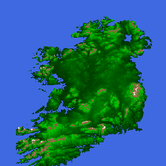this for the info yah basicly the anti-macro screen pops up randomly and shows 3-5 icons. Then you have a list of icons at the bottom and you must click the icons that match.
as you can see in this picture there 3 icons/images from the tops have to be matched with the ones on the bottom.
http://img853.imageshack.us/img853/4273/825t.png
In the first post you were asking about some routines that use compute-intensive computer vision techniques.
In that link you are just putting numbered icons on the screen.
For what you described in this link, the algorithm is simply:
* Enumerate the available icons. For example, you might have 37 icons.
* Display three of them at random. For example, you might display icon 7, 14, and 31, in a randomized order.
* Display several to chose from at the bottom, including the ones you selected. Perhaps showing icons 7, 14, 31 (the ones that matched), 3, 9, and 18 (some that don't match), in a randomized order.
* If the user clicks the same three values that match and none of the three incorrect values, it is matched.
No computer vision necessary. In C++ just put the enumeration values in an array, random_shuffle(), the array, then pick the first set and second set for display, shuffling again to randomize the order.


 mageshack.us/photo/my-images/853/825t.png/][/URL]
mageshack.us/photo/my-images/853/825t.png/][/URL]



